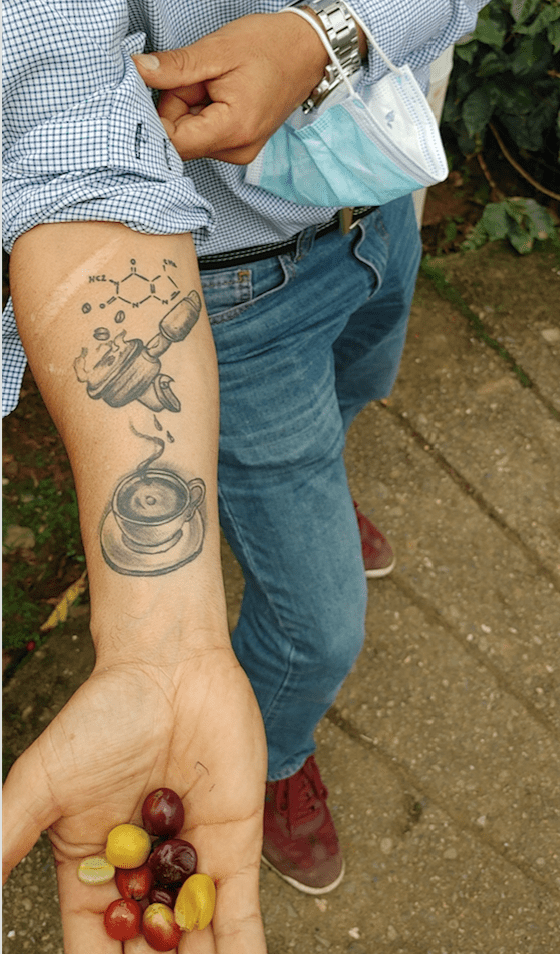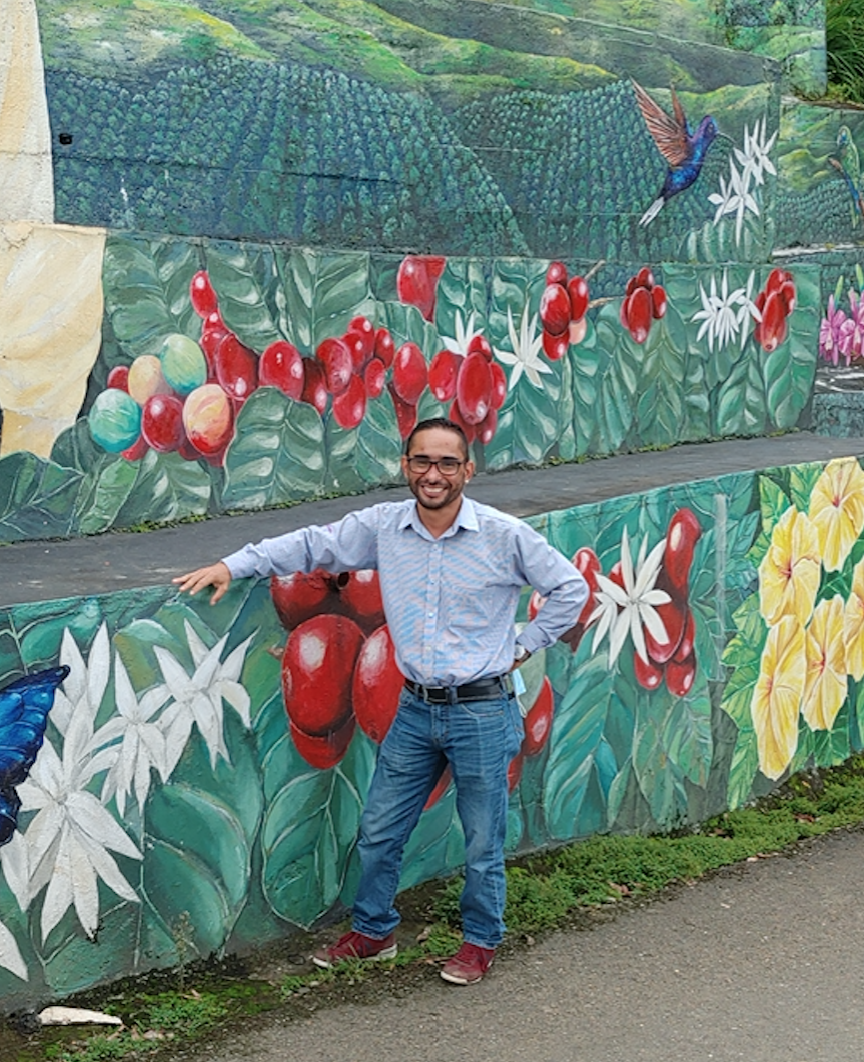Coffee is part of Colombian culture
IAN STALKER
Some Colombian coffee enthusiasts might wear their hearts on their sleeves when expressing appreciation for a beverage that is hugely popular in the country.
And Julian Jaramillo in turn frequently and literally wears his liking of coffee under his sleeve.
Jaramillo is with Hacienda San Alberto, a coffee producer in Buenavista in the Colombian department of Quindio, where his work includes guiding visitors around the 40-hectare estate, providing insights into the growing of coffee beans and their subsequent conversion into coffee, and how to appreciate and distinguish between different coffees.
And should anyone doubt that Jaramillo himself doesn’t enjoy a cup of Joe, that individual need only look at Jamarillo’s right arm, which has a tattoo of a cup of coffee being poured, a tattoo he likes to display when visiting coffee shops by wearing a t-shirt.

Jamarillo’s tattoo may reveal his enjoyment of coffee in a non-conventional manner but his appreciation for it is the norm in the homeland of Juan Valdez, with Maria Paula Torres Guerrero of Colombian tourism board ProColombia stating, “It’s unusual to find Colombians who don’t drink coffee.”
Indeed, Colombia’s coffee culture has been recognized by UNESCO.
There are plenty of foreigners who enjoy coffee culture as well, with Hacienda San Alberto hosting hundreds of visitors a year, some Colombian, others from outside the country.
Jamarillo reports Colombia is third when it comes to coffee production, with 22 of the country’s 32 departments now producing it.
Hacienda San Alberto produces some 200 tonnes of coffee a year, three quarters of which is sold under the San Alberto banner, while the remaining quarter isn’t seen as suitable to be marketed as premium coffee and is dealt through another route.
Jamarillo happily informs visitors about coffee production, telling them it will likely take eight to nine months before a coffee bean is ready to be picked and the processing of coffee beans will take at least a month.
“People don’t understand how involved making coffee is,” he states. “If a person says, ‘I know all about coffee,’ it’s not true.
“You’re always learning.”

Hacienda San Alberto can certainly help with the learning process, with Jamarillo’s tours leading people through the sloped estate while he points out the likes of coffee beans and other items growing there — visitors will also hear birds chirping, with Hacienda San Alberto receiving Rainforest Alliance certification because of its environmental practices — and also showcasing the different machinery involved in making coffee.
Jamarillo also leads coffee “baptisms,” which among other things has apron-clad participants evaluating different coffees for the likes of taste and aroma and receiving a “baptism” certificate after they’re done.
Visitors can buy attractive-looking bags of the San Alberto brand during their tours.
Jamarillo says those who are ambivalent about coffee may change their mind after a Hacienda San Alberto tour.
“There are visitors who say they don’t care for coffee and then find it amazing after the tour,” he reports. “The final result is they start to love coffee.”
More information is available at cafesanalberto.com.

















